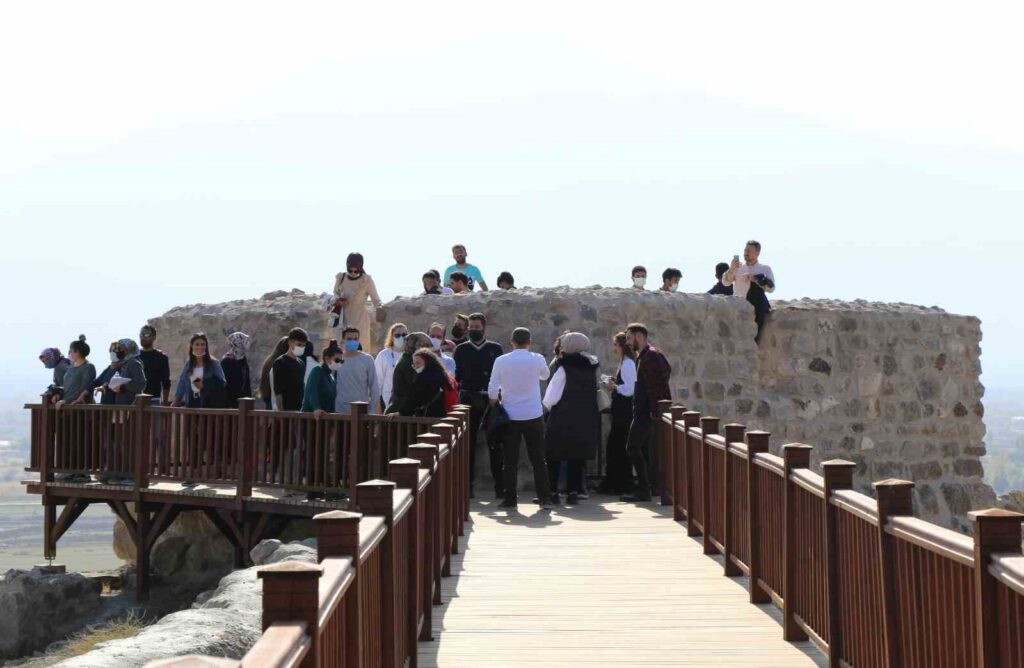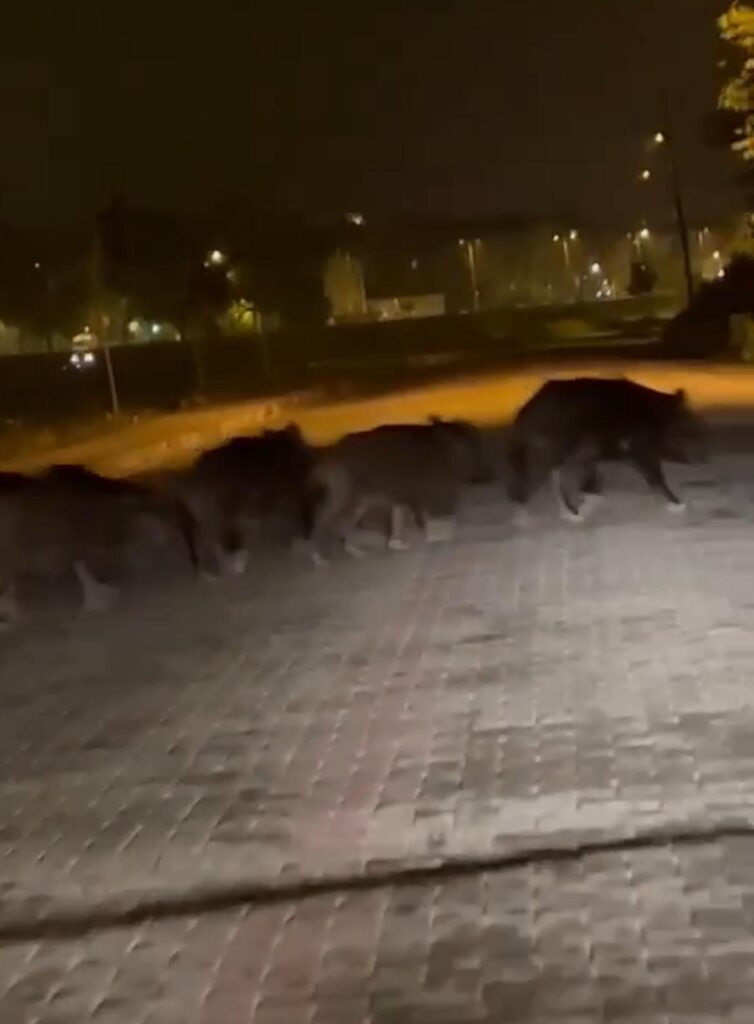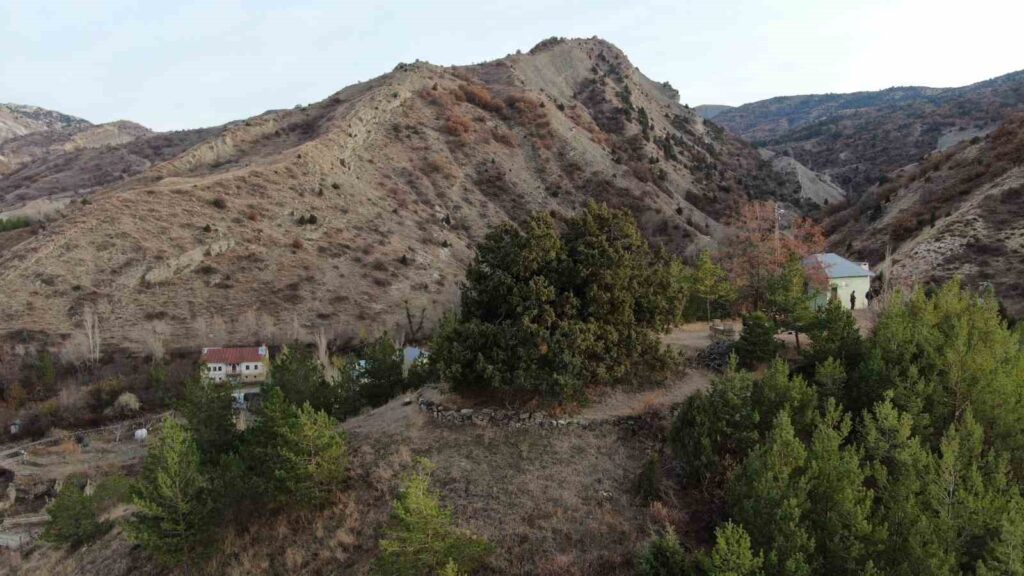Ancient cities that should be visited in the Eastern Anatolia Region
The Eastern Anatolia Region, covering one-fifth of Turkey’s land area, is also the geographical region with the lowest population density. These vast lands have hosted many civilizations over the years, primarily the Urartians.

The Eastern Anatolia Region, which covers one-fifth of Turkey’s land area, is also the geographical region with the lowest population density. This vast area has hosted many civilizations over the years, especially the Urartians. Numerous settlements bearing traces of so many civilizations shed light on the region’s past. The ancient cities that should be seen in the Eastern Anatolia Region are as follows:
Ancient Cities in Eastern Anatolia
Altıntepe, Erzincan
Located in the Üzümlü district of Erzincan, Altıntepe is an ancient city established during the Urartian Period. This mound, which is 60 meters high from the plain level, has also hosted Byzantine and Ottoman civilizations. In the first excavation phases, the Urartian Temple, the Apadana (a columned reception hall in Persian architecture), an open-air temple, underground stone-walled burial chambers, and the city walls from the Urartian and Byzantine periods were found. Some of these historical artifacts are exhibited in the Museum of Anatolian Civilizations in Ankara. In the ongoing second phase excavations, the temple section has been restored. A significant part of the city’s sewage system has been uncovered during the excavations. It has been understood that the city’s sewage system was highly developed as the first European-style toilet stone was also found in these excavations. The only preserved piece from the mosaics of the Early Byzantine Church is in the Erzincan Museum. One of the best-preserved Urartian cities, Altıntepe is planned to be opened to visitors soon as an “Archaeopark.”
Anzavurtepe (Aznavurtepe) Mound, Ağrı
Anzavurtepe Mound, located two kilometers northeast of the Patnos district in Ağrı, is commonly known as Kot Tepe. This mound, which is one of the most important remnants of the Urartian period, has a height of 300 meters. Anzavurtepe Mound is known to be the oldest settlement in Ağrı, where palace, temple, platform, tombstones, a fortress built with basalt stones, traces of surrounding walls, and building remnants have been found. The surrounding walls of the mound were built during the reign of Urartian King Menua, and the temple was constructed during the reign of another Urartian King, İşpuini. Anzavurtepe Castle, which has an approximate history of 2800 years, also dates back to the Urartian period. Some sections of the surrounding walls of the castle have towers.
Giriktepe Mound, Ağrı
Giriktepe Mound, known to be the center of the Urartians, is located in the Dere neighborhood, just one kilometer south of the Patnos district in Ağrı. This mound, which the local people refer to as Değirmentepe, is ten meters high, but it has unfortunately been diminished due to destruction.
It has been decided to evaluate Giriktepe Mound as a priority excavation site, just like Anzavurtepe. In the conducted excavations, a building resembling a palace and the remnants of surrounding walls have been found on top of the mound. It is thought that the palace found at the top was built during the reigns of Urartian King Menua or his son I. Argişti.
Most of the jewelry and tools made of iron and bronze discovered from Giriktepe Mound are exhibited in the Museum of Anatolian Civilizations in Ankara. The reason for this is that there was no suitable museum in the city at the time the artifacts were unearthed.
Harput, Elazığ
Harput Ancient City, resembling an open-air museum, is located in the Harput neighborhood northeast of Elazığ.
Harput, which was added to the UNESCO Culture Heritage Tentative List in 2018, has a history dating back to the 20th century BC. Of course, a city with such a long history has hosted many civilizations, including the Urartians, Medes, Persians, Byzantines, Sassanids, Mongols, Seljuks, Safavids, and Ottomans.
Among the places to see in Harput Ancient City, one of Elazığ’s most touristic spots, are the castle, caves, and religious buildings.
The Harput Castle, built by the Urartians in the 8th century BC on a rectangular plan, consists of inner and outer castle sections. According to some accounts, during the time the castle was built, a water shortage occurred, so milk was used instead of water in the construction materials. For this reason, Harput Castle is also known as the “Castle of Milk.”
In the excavation works, dungeons, a mint, living and treatment areas have been found inside the castle. The dungeon inside the castle is located 36 meters deep and can be accessed by a staircase with one hundred steps. Additionally, ceramic pots, kitchen utensils, metal arrowheads, bone objects, glass bracelets, and copper coins have been unearthed from this area.
Ani, Kars
Ani Ancient City, which was accepted to the UNESCO World Heritage Tentative List in 2012 and entered the World Heritage List in 2016, is a valuable historical city certified by UNESCO, located within the borders of Ocaklı Village, approximately 42 kilometers away from the city center of Kars.
The Ani Ruins and Archaeological Site are located west of the Arpaçay River, which forms a natural border between Turkey and Armenia.
Due to its numerous churches and chapels, Ani is known as the “City of a Thousand and One Churches” or the “City of Forty Gates.” The name of Ani first appeared in historical records in the 6th century as a place belonging to Armenian princes. Over the years, this ancient city has hosted many civilizations, including Bagratuni Armenians, Seljuks, Byzantines, and Ottomans. Ani, being one of the most popular spots of the recently popular Eastern Express, has many places to see, such as Ani Cathedral, Surp Krikor Lusavoriç Church, Surp Hripsime Monastery (Monastery of Virgins), King Gagik Church, Lion Gate, Fire Temple, Menuçehr Mosque, Ani City Walls, and Seljuk Caravanserai. The Mary Mother Church, known as Ani Cathedral or the Great Cathedral, is one of the best-preserved structures in the city. The architect of this beautiful church is Architect Tridat, who repaired the dome of the Hagia Sophia in Istanbul.
Arslantepe Mound, Malatya
One of the largest mounds in Turkey, Arslantepe Mound, is located in the Orduzu neighborhood of Battalgazi district in Malatya.
This mound, which is thirty meters high, has been inhabited from 5000 BC to the 11th century AD. The settlement area, which is 200 x 120 meters in size, was used as a Roman Village in the 5th-6th centuries AD and later as a Byzantine Necropolis.
Arslantepe Mound, which is almost like an open-air museum, has yielded a temple dating back to 3600 – 3500 BC and a palace from 3300 – 3000 BC as a result of the excavations conducted there. Numerous seals and metal objects requiring craftsmanship have also been uncovered during the excavations. These valuable archaeological findings prove that Arslantepe was a political, religious, commercial, and cultural center. Among the places you can explore in this impressive mound are adobe walls up to two and a half meters high, a temple, storage, and administrative rooms.
Panels accompanying you while walking inside the palace provide comprehensive information on subjects such as the conditions for the start of war and how the first administrative system operated. Additionally, you can see the historical wall paintings that decorate the corridor and rooms located in the middle section of the palace.
Kayalıdere, Muş
Kayalıdere Ancient City, also known as Urartian Castle and Urartian Rock Tomb, is located in Kayalıdere Village of Varto district in Muş.
This ancient city, believed to have been established during the reign of Urartian King II. Sarduri, was used as a military settlement at that time. Excavation works in the area have uncovered a temple, a castle, a storage building containing wine barrels, and a rock tomb.
The bronze lion statue, lion-depicting arches, arrowheads, and bronze needles found during the excavations are among the remarkable historical artifacts. Some of the artifacts unearthed are exhibited in the Museum of Anatolian Civilizations in Ankara.
Tuşpa, Van
Tuşpa, which is one of the oldest cities still inhabited in the world, is located on the eastern shore of Lake Van.
This city, founded by Urartian King I. Sarduri, served as the capital of the Urartians from the 9th century BC until its fall. Archaeological excavations in Tuşpa have been carried out within Van Castle. At the entrance of the castle, there is the Sarduri (Madır) Tower. During the excavation works, cuneiform inscriptions written in the Assyrian language by King I. Sarduri were found. The Analı-Kız Open-Air Temple, Thousand Steps, the walls carved into the Main Rock, and the rock tombs of Urartian kings Menua, I. Argişti, and II. Sarduri are among the must-see places in the castle.
Additionally, the natural beauty of Lake Van combines with the historical texture of the castle, creating a magnificent view at sunset. Before leaving Tuşpa, do not forget to see the Seljuk Ulu Mosque and the Ottoman-era Kaya Çelebi and Hüsrev Pasha Mosques, which are among the ruins of the old city of Van located to the south of the castle.
You can visit the Van Urartian Museum, located very close to Van Castle, to see the historical artifacts, documents, photographs, and models from the Urartian Period.







